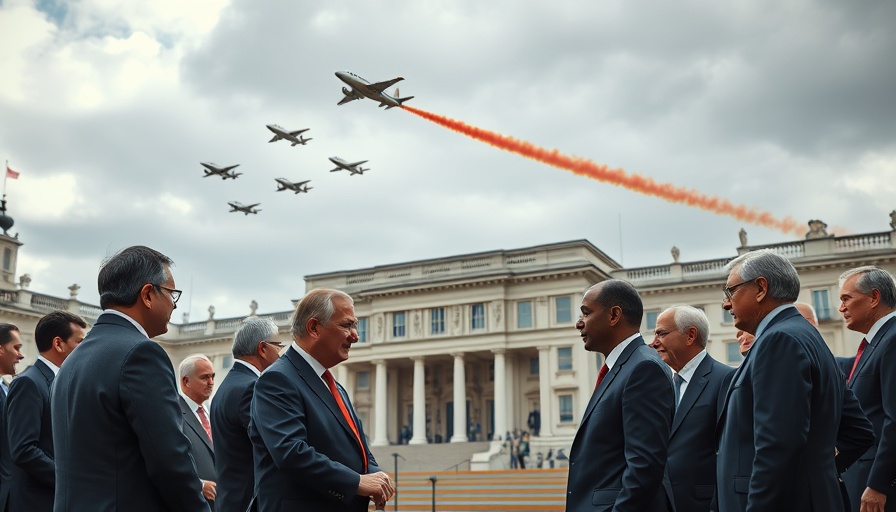
UK and Ukraine Forge Innovative Drone Alliance
In a groundbreaking development, the UK has formalized a unique technology sharing agreement with Ukraine aimed at developing advanced military drones. Dubbed as industrial partnership, this initiative will allow both nations to share detailed designs for cutting-edge air defense technologies. As the UK gears up to manufacture and co-develop sophisticated military equipment, this collaboration not only aims to support a crucial ally but also promises to bolster job creation within Britain.
Introducing Project OCTOPUS: The Future of Air Defense
The inaugural project under this partnership, titled Project OCTOPUS, will focus on manufacturing advanced air defense interceptor drones slated for mass production in the UK. Designed to withstand the ongoing aerial threats posed by Russia, these drones are expected to attack enemy drones efficiently, offering a cost-effective alternative to traditional air defense missiles. The UK's plan to produce thousands of these interceptors each month meets the urgent needs of Ukraine as they continue their fight against Russian aggression.
A Response to Current Threats: Crime in the Skies
The strategic necessity for such drone technology has been underscored by recent events where Russia's reckless attacks hit Western Ukraine. This burgeoning threat signifies the urgency for enhanced aerial defense mechanisms, as demonstrated by the rapid deployment of NATO forces to counter Russian incursions. The collaboration between UK and Ukrainian defense sectors is positioned as a crucial step in strengthening not only Ukraine’s defenses but also the collective security of Europe.
Economic Growth Through Defense Innovation
This tech-sharing agreement aligns with the UK government's vision to revitalize its defense industry as a catalyst for economic growth. The government has recently announced a substantial investment of hundreds of millions of pounds through its Defense Industrial Strategy—an initiative designed to harness the defense sector's potential to deliver economic benefits, such as job creation and industrial resilience. Prime Minister Keir Starmer has emphasized that support for Ukraine goes hand in hand with bolstering the UK's economic landscape.
The Future of Defense Collaboration
This partnership marks a significant shift toward greater collaboration in defense technology. As global tensions remain heightened, sharing knowledge and resources becomes paramount. The industrial partnership seeded between UK and Ukraine could set precedence for future engagements, not just in defense but in various technological exchanges across strategic allies.
Conclusion: Driving Change in Global Defense
The implications of this new partnership extend beyond mere military applications; it epitomizes how innovation in defense technology can be synergized with economic growth strategies. As technology progresses rapidly, the ability for cooperating nations to harness reputable expertise could indeed redefine the geopolitical landscape in the years to come. The landscape of modern warfare is transforming, and the UK’s commitment to support its allies like Ukraine signals a promising era for defense collaboration.
 Add Row
Add Row  Add
Add 




Write A Comment